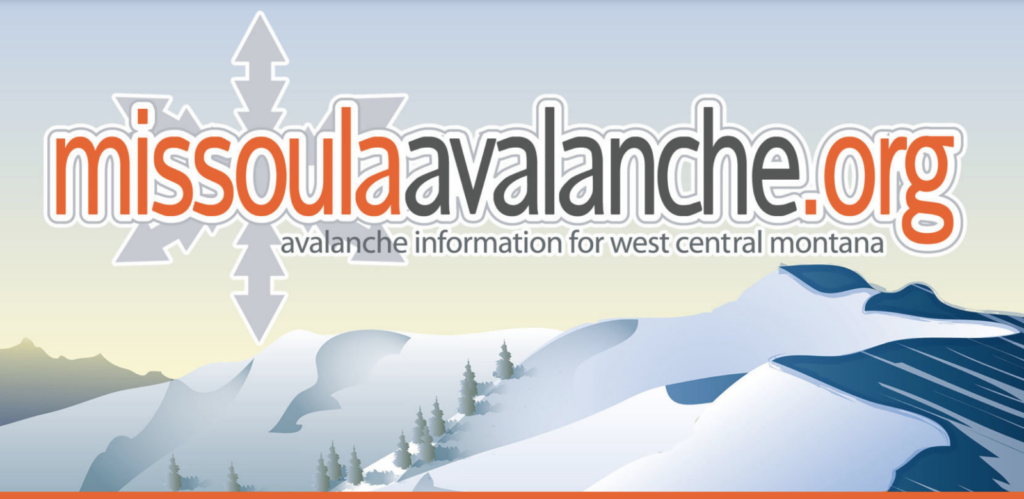
During the 2021/2022 operating season, the West Central Montana Avalanche Center (WCMAC) maintained the thrice-weekly avalanche forecast schedule of previous seasons and issued fifty-seven (57) forecasts. The season included six (6) high hazard days, three (3) avalanche warnings, one (1) special bulletin, twenty-four (24) considerable ratings, seventeen (17) moderate, and ten (10) low danger days. Additionally, six (6) general avalanche information bulletins were issued. The WCMAC issued the season’s first forecast on December 30th, 2021, and the final forecast on April 9th, 2022.
In contrast to the previous two years, when deep slab instabilities created season-long problems, facets played a minor role and rounded out quickly during the 2021/2022 season. The exception was two short-lived, isolated deep slab problems in the Bitterroot. Wind slab was the predominant problem type making an appearance 75% of the time. Wet problems regularly appeared with rain to upper elevations in January, February, March, and April. Temperatures well above average in late March resulted in a widespread wet slab cycle with slides to D4 in size.
The winter season started late and suddenly. In early December, we recorded 12″ of an unconsolidated base. The snowpack grew to 40+ inches by December 10th, and forecasting began. It was nice to find a stable, uniform base underlying the snowpack. Snowpack hovered around 100% for most of the season but dropped below average during the late March warmth. April and May brought winter back, and the snowpack climbed to 110% by May 1st, 2022. Cold temperatures and continued snowfall through May brought SWE to nearly 500% of average by June 15th, 2022.
Personnel changes from the previous season included the retirement of Travis Craft from the Director position. Forecaster Jeff Carty was selected and welcomed as the incoming Director, and Ryan Sorenson, previously of the Mt. Shasta Avalanche Center, was hired as a Forecaster. Returning from last year, five (5) Professional Observers were employed to gather field observations throughout the forecast area. One hundred eighteen (118) Professional Observation days were logged, providing increased coverage of the forecast area. Public Observations stayed on par with the previous two (2) years at one hundred twenty-five (125) observations.
The WCMAC transitioned to the National Avalanche Center (NAC) dashboard and website platform after using the previous website for over a decade. The new website brought increased functionality and received consistently positive feedback from the community. In addition to the new website, the WCMAC defined three (3) forecasting zones to represent conditions more accurately throughout the area. On February 12th, 2022, the WCMAC updated the forecast area, indicating the Seeley Lake zone, the Rattlesnake zone, and the Bitterroot zones. This welcome change resulted from recognizing the growing needs of the user base and helped deliver more accurate forecasting products for west-central Montana.

Photo Credit: Trask Baughman
The West Central Montana Avalanche Foundation (WCMAF) education program kicked off the season with free avalanche awareness sessions for all backcountry travelers. Four (4) avalanche awareness events occurred as online webinars and three (3) as outdoor motorized education events. Collectively just over three hundred (300) people attended the awareness events. This winter also marked the return of the Know Before You Go (KBYG) program, with classroom and field sessions. The KBYG program spent significant time with school groups and reached over two hundred (200) students. Weekly Level 1 courses began in January and concluded in March. All non-motorized Level 1 courses were led by American Avalanche Association (A3) Pro instructors and delivered within a hybrid format that included virtual classroom sessions and a 4-to-1 student-to-instructor field ratio. For the fourth consecutive season, the WCMAF partnered with the Mountain Riding Lab to provide AIARE’s motorized curriculum to mountain riders throughout the region. Overall, Level 1 course offerings reached one hundred forty-four (144) students this season. With the education team focused on weekly course offerings, WCMAC Forecasters expanded educational program capacity and outreach, delivering an Avalanche Rescue course for Missoula County Search and Rescue and on-snow training for regional Forest Service staff.
When we reflect on the 2021-2022 season, it reminds us that the ability to provide avalanche information and education is made possible through the continued support of dedicated avalanche professionals and the communities we serve. Operating in the mountains, we observe continuous changes in weather and snowpack. Similarly, the backcountry community is constantly changing, growing, and diversifying. As an organization striving to equip communities with the tools needed to recreate safely in a dynamic environment, our responsibility is to change, grow, and evolve. As we prepare for another busy winter season, our focus remains on community engagement, staffing, partnerships, and educational resources.























